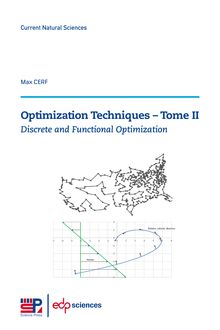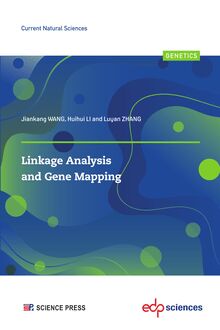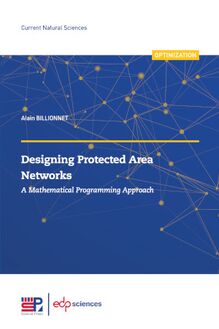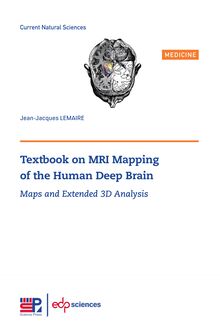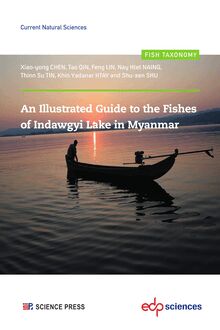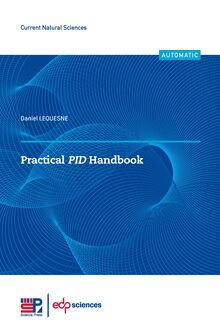-
 Univers
Univers
-
 Ebooks
Ebooks
-
 Livres audio
Livres audio
-
 Presse
Presse
-
 Podcasts
Podcasts
-
 BD
BD
-
 Documents
Documents
-
- Cours
- Révisions
- Ressources pédagogiques
- Sciences de l’éducation
- Manuels scolaires
- Langues
- Travaux de classe
- Annales de BEP
- Etudes supérieures
- Maternelle et primaire
- Fiches de lecture
- Orientation scolaire
- Méthodologie
- Corrigés de devoir
- Annales d’examens et concours
- Annales du bac
- Annales du brevet
- Rapports de stage
La lecture à portée de main
Découvre YouScribe en t'inscrivant gratuitement
Je m'inscrisDécouvre YouScribe en t'inscrivant gratuitement
Je m'inscrisEn savoir plus
En savoir plus

Description
There is a broad consensus in considering that the loss of biodiversity is accelerating which is due, for example, to the destruction of habitats, overexploitation of wild species and climate change. Many countries have pledged at various international conferences to take swift measures to halt this loss of biodiversity. Among these measures, the creation of protected areas – which also contribute to food and water security, the fight against climate change and people’ health and well-being – plays a decisive role, although it is not sufficient on its own.
In this book, we review classic and original problems associated with the optimal design of a network of protected areas, focusing on the modelling and practical solution of these problems.
We show how to approach these optimisation problems within a unified framework, that of mathematical programming, a branch of mathematics that focuses on finding good solutions to a problem from a huge number of possible solutions. We describe efficient and often innovative modellings of these problems. Several strategies are also proposed to take into account the inevitable uncertainty concerning the ecological benefits that can be expected from protected areas. These strategies are based on the classical notions of probability and robustness.
This book aims to help all those, from students to decision-makers, who are confronted with the establishment of a network of protected areas to identify the most effective solutions, taking into account ecological objectives, various constraints and limited resources. In order to facilitate the reading of this book, most of the problems addressed and the approaches proposed to solve them are illustrated by fully processed examples, and an appendix presents in some detail the basic mathematical concepts related to its content.
Sujets
Informations
| Publié par | EDP Sciences |
| Date de parution | 15 février 2021 |
| Nombre de lectures | 0 |
| EAN13 | 9782759825370 |
| Langue | English |
| Poids de l'ouvrage | 11 Mo |
Informations légales : prix de location à la page 0,0005€. Cette information est donnée uniquement à titre indicatif conformément à la législation en vigueur.
Extrait
A. BILLIONNET
Designing Protected Area Networks – A Mathematical Programming Approach
Current Natural Sciences Current Natural Sciences
OPTIMIZATION OPTIMIZATIONDesigning Protected Area
Networks
A Mathematical Programming Approach
Alain BILLIONNET
There is a broad consensus in considering that the loss of
biodiversity is accelerating which is due, for example, to the
destruction of habitats, overexploitation of wild species and Alain BILLIONNET
climate change. Many countries have pledged at various
international conferences to take swift measures to halt this loss
of biodiversity. Among these measures, the creation of protected
areas – which also contribute to food and water security, the fight
against climate change and people’ health and well-being – plays
a decisive role, although it is not sufficient on its own.
In this book, we review classic and original problems associated Designing Protected Area
with the optimal design of a network of protected areas, focusing
on the modelling and practical solution of these problems. Networks
We show how to approach these optimisation problems within a
unified framework, that of mathematical programming, a branch of
A Mathematical Programming Approachmathematics that focuses on finding good solutions to a problem
from a huge number of possible solutions. We describe efficient
and often innovative modellings of these problems.
Several strategies are also proposed to take into account the
inevitable uncertainty concerning the ecological benefits that
can be expected from protected areas. These strategies are based
on the classical notions of probability and robustness.
This book aims to help all those, from students to decision-makers,
who are confronted with the establishment of a network of
protected areas to identify the most effective solutions, taking into account
ecological objectives, various constraints and limited resources.
In order to facilitate the reading of this book, most of the problems
addressed and the approaches proposed to solve them are
illustrated by fully processed examples, and an appendix presents in
some detail the basic mathematical concepts related to its content.
ISBN : 978-2-7598-2521-9
www.edpsciences.orgA. BILLIONNET
Designing Protected Area Networks – A Mathematical Programming Approach
Current Natural Sciences Current Natural Sciences
OPTIMIZATION OPTIMIZATIONDesigning Protected Area
Networks
A Mathematical Programming Approach
Alain BILLIONNET
There is a broad consensus in considering that the loss of
biodiversity is accelerating which is due, for example, to the
destruction of habitats, overexploitation of wild species and Alain BILLIONNET
climate change. Many countries have pledged at various
international conferences to take swift measures to halt this loss
of biodiversity. Among these measures, the creation of protected
areas – which also contribute to food and water security, the fight
against climate change and people’ health and well-being – plays
a decisive role, although it is not sufficient on its own.
In this book, we review classic and original problems associated Designing Protected Area
with the optimal design of a network of protected areas, focusing
on the modelling and practical solution of these problems. Networks
We show how to approach these optimisation problems within a
unified framework, that of mathematical programming, a branch of
A Mathematical Programming Approachmathematics that focuses on finding good solutions to a problem
from a huge number of possible solutions. We describe efficient
and often innovative modellings of these problems.
Several strategies are also proposed to take into account the
inevitable uncertainty concerning the ecological benefits that
can be expected from protected areas. These strategies are based
on the classical notions of probability and robustness.
This book aims to help all those, from students to decision-makers,
who are confronted with the establishment of a network of
protected areas to identify the most effective solutions, taking into account
ecological objectives, various constraints and limited resources.
In order to facilitate the reading of this book, most of the problems
addressed and the approaches proposed to solve them are
illustrated by fully processed examples, and an appendix presents in
some detail the basic mathematical concepts related to its content.
ISBN : 978-2-7598-2521-9
www.edpsciences.orgCurrent Natural Sciences
Alain BILLIONNET
Designing Protected
Area Networks
A Mathematical Programming ApproachAlain Billionnet is Professor emeritus at the École Nationale Supérieure d'Informatique
pour l'Industrie et l'Entreprise (ENSIIE), researcher at the Centre d'études et de
recherche en informatique et communication (Cédric) of the Conservatoire national des
arts et métiers (Cnam).
Financial support for the publication of this book was provided by the Combinatorial
Optimisation team of the Cédric laboratory. This support is gratefully acknowledged.
Printed in France
EDP Sciences – ISBN(print): 978-2-7598-2521-9 – ISBN(ebook): 978-2-7598-2537-0
DOI: 10.1051/978-2-7598-2521-9
ThisbookispublishedinunderOpenAccessCreativeCommonsLicenseCC-BY-NC-ND
(https://creativecommons.org/licenses/by-nc-nd/4.0/en/) allowing non-commercial use,
distribution, reproduction of the text, via any medium, provided the source is cited.
Alain Billionnet, 2021To Ulysse, Valentin, Albane, and AgatheIntroduction
Biodiversity, a contraction of the words biological and diversity, represents the
diversity of living organisms (animals, plants, fungi, and bacteria) and their living
environments (aquatic, terrestrial, underground, aerial). The diversity of living
organisms refers to the diversity of species and the diversity of genes within each
species. The species richness of a given place, i.e., the number of species present in
that place, is a widely used measure to quantify the biodiversity of that place. This
measureiseasytointerpret,butinventoryingthespeciespresentatagivenlocation
can be a difficult and costly exercise. Some species such as higher plants and
vertebrates are easy to observe but this is not the case, for example, with fungi and
bacteria.Thenumberofindividualsofeachspeciesisalsoaninterestingindicator.It
can also be difficult to estimate. Genetic diversity essentially corresponds to the
diversityofalleles – versions ofa gene – within individualsof the same species. This
diversity, which results from mutations and reproduction between individuals,
allows species to adapt to changes in their environment. Observing this diversity
requires sophisticated and relatively expensive techniques. The notion of
biodiversity also includes the interactions that exist between living organisms and also the
interactions between these organisms and their living environments. Today’s
biodiversity is the result of a slow evolution of the living world, spread over billions of
years and affecting the entire planet. There is a broad consensus that the
preservation of biodiversity is currently a major issue. Biodiversity provides irreplaceable
and essential goods for our survival, such as food, oxygen, medicines, and raw
materials. In addition, species such as insects, bats, and birds pollinate plants.
Finally, natural environments contribute to natural water purification, flood
prevention, landscape structuring, and the quality of our living environment.
There is also a broad consensus to consider that biodiversity loss is accelerating
and that the five major causes of biodiversity loss are habitat destruction (e.g.,
urbanization, deforestation, wetland drying), biological invasions (e.g., Japanese
knotweed, coypu), pollution (e.g., release of a large number of toxic substances into
DOI: 10.1051/978-2-7598-2521-9.c991
Science Press, EDP Sciences, 2021VI Introduction
the environment and wide distribution of these substances), overexploitation of
species (e.g., African and Asian rhinos, bluefin tuna, ebony) and climate change,
including its rate. For example, according to the World Wildlife Fund (WWF),
global vertebrate populations declined by almost 70% between 1970 and 2016.
Stopping the loss ofbiodiversity is, therefore, one ofthe major challenges facing the
international community today. Many countries are committed to take early action
to halt biodiversity loss.
Protected areas play a decisive role in maintaining biodiversity because they
make it possible to directly target the protection of elements at high risk of
extinction. Thus, at the 10th Conference of the Parties in Nagoya (COP 10), the
signatory countries adopted a Strategic Plan for the period 2011–2020 with 20 key
objectivestoimprovebiodiversityconservation.Target11setstheglobalcoverageof
protected areas to be at least 17% of terrestrial and inland water areas and at least
10%ofmarineareas. Theseprotected areas may require therestoration ofdegraded
habitats such as reforestation, reintroduction of species, control of invasive species,
and restoration of wetlands. They can be created on a regional, national or even
international scale and be linked in networks in a physical or organizational way.
They already occupy a significant fraction of the Earth’s surface and generally aim
to preserve several aspects of biodiversity simultaneously. They can also protect
speciesstillunknowntoscientists.Somespeciesareverysensitivetohumanpresence
and many activities can be prohibited within protected areas, such as habitat
transformation, hunting, fishing, tourism, and sports. The term protected area is
now very often used. However, there are many other terms used to designate these
regulated areas for nature protection: nature park, nature reserve, protected zone,
conservation area, protected site, etc. The International Union for Conservation of
Nature (IUCN) identifies six categories of protected areas, terrestrial and marine,
according to their management objectives and defines a prot
-
 Univers
Univers
-
 Ebooks
Ebooks
-
 Livres audio
Livres audio
-
 Presse
Presse
-
 Podcasts
Podcasts
-
 BD
BD
-
 Documents
Documents
-
Jeunesse
-
Littérature
-
Ressources professionnelles
-
Santé et bien-être
-
Savoirs
-
Education
-
Loisirs et hobbies
-
Art, musique et cinéma
-
Actualité et débat de société
-
Jeunesse
-
Littérature
-
Ressources professionnelles
-
Santé et bien-être
-
Savoirs
-
Education
-
Loisirs et hobbies
-
Art, musique et cinéma
-
Actualité et débat de société
-
Actualités
-
Lifestyle
-
Presse jeunesse
-
Presse professionnelle
-
Pratique
-
Presse sportive
-
Presse internationale
-
Culture & Médias
-
Action et Aventures
-
Science-fiction et Fantasy
-
Société
-
Jeunesse
-
Littérature
-
Ressources professionnelles
-
Santé et bien-être
-
Savoirs
-
Education
-
Loisirs et hobbies
-
Art, musique et cinéma
-
Actualité et débat de société
- Cours
- Révisions
- Ressources pédagogiques
- Sciences de l’éducation
- Manuels scolaires
- Langues
- Travaux de classe
- Annales de BEP
- Etudes supérieures
- Maternelle et primaire
- Fiches de lecture
- Orientation scolaire
- Méthodologie
- Corrigés de devoir
- Annales d’examens et concours
- Annales du bac
- Annales du brevet
- Rapports de stage
